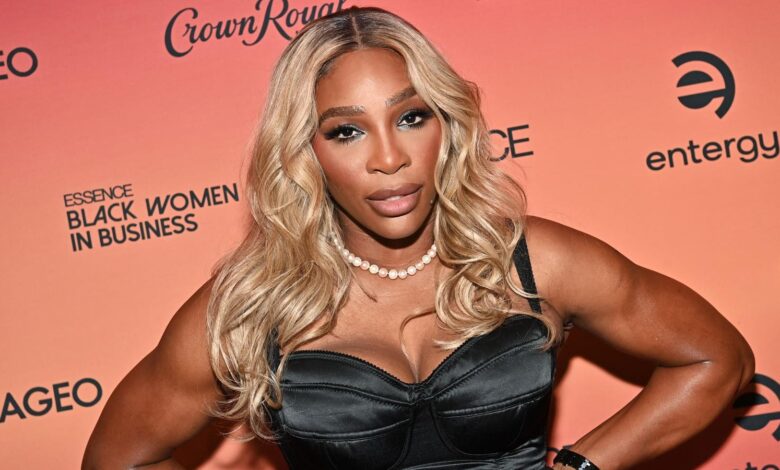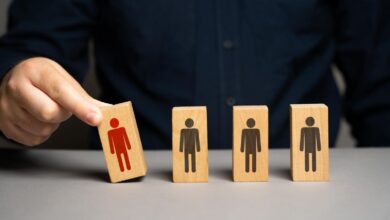What Serena Williams’ Story Reveals About Sizeism And Survival

📝 usncan Note: What Serena Williams’ Story Reveals About Sizeism And Survival
Disclaimer: This content has been prepared based on currently trending topics to increase your awareness.
NEW ORLEANS, LOUISIANA – JULY 06: Serena Williams attends the 2024 ESSENCE Black Women in Business Dinner at the Four Seasons New Orleans on July 06, 2024 in New Orleans, Louisiana. (Photo by Paras Griffin/Getty Images for ESSENCE)
Getty Images for ESSENCE
43-year-old tennis champion and Olympic gold medalist Serena Williams recently shared that she lost 31 pounds using a GLP-1 drug. Within the last few years, GLP-1 drugs like Ozempic, Wegovy, Zepbound, and Mounjaro, which are a category of medications designed to help manage blood sugar levels of Type 2 diabetics, have risen in popularity due to their weight management properties. Williams shared that after having her second child in 2023, she struggled to lose the weight she had put on. She told Women’s Health that the extra weight she was carrying led to her experiencing joint pain and impacted her ability to run during tennis training.
When Williams made the announcement that she was utilizing GLP-1s to help with weight loss, she was met with mixed reactions from the public. On one hand, many applauded Williams for her transparency. As a celebrity and someone with means, Williams can hire trainers, nutritionists and chefs to help her in ways that those who don’t have fame and wealth don’t often have access to; sharing her weight loss struggles can encourage others to stand in their truth. On the other hand, some were disappointed in Williams for seemingly feeding into thinness culture that she is known for pushing back against.
For Williams, scrutiny about her body has been ongoing and persistent throughout her career. Critiques about her body have been more prevalent because Williams’ career has centered on her body’s ability to “perform.” Lookism is the bias faced by people who do not fit conventional and societally accepted beauty standards and impacts women’s careers in a multitude of ways. Within Western society, for women and femmes, physical attractiveness has been inextricably linked to weight.
Within the last few years, GLP-1 drugs like Ozempic, Wegovy, Zepbound, and Mounjaro, which are a category of medications designed to help manage blood sugar levels of Type 2 diabetics, have risen in popularity due to their weight management properties.
getty
There is a wealth of research that indicates that women are harmed in different ways for occupying bigger bodies; weight stigma and fatphobia in the workplace have very real consequences for job applicants and employees. According to the Society for Human Resource Management (SHRM), weight-based discrimination in the workplace can manifest as a lower likelihood to be hired for a role, fewer promotions, microaggressions from coworkers and even wrongful termination. Women often experience greater scrutiny because of their weight compared to men. In the acclaimed book Fearing the Black Body: The Racial Origins of Fat Phobia, Sabrina Strings highlighted the anti-Black roots of fatphobia. Research from the UCLA Center for the Study of Women indicates that Black women experience a compounded form of stigmatization related to their race and weight.
The world feels entitled to comment on women’s appearance and bodies, and Black women like Williams face heightened analysis and scrutiny compared to their counterparts. Hip-hop icon Lil’ Kim has constantly been on the receiving end of online vitriol due to her appearance, with many criticizing her over the years for plastic surgery. Singer Lizzo continuously receives body shaming comments, there is frequent speculation about her health and in early 2025, the singer was slammed online for her dramatic weight loss. What cannot be left out of the conversation when discussing Williams’ decision to use GLP-1s to lose weight is the compounded effect of racism, sexism, and sizeism that Black women in bigger bodies face in society.
The world feels entitled to comment on women’s appearance and bodies, and Black women like Williams face heightened analysis and scrutiny compared to their counterparts.
Getty Images for The Met Museum/Vogue
Awareness of the problem is a vital part of addressing fatphobia and the myriad ways it impacts people in society. It is crucial for us to push for protections against sizeism in our workplaces and society at large. Currently in the United States, Michigan is the only state that provides protections against weight-based discrimination. We should advocate for education about sizeism, learn how it impacts us, and recognize policies and practices to combat it.
We must acknowledge that we live in a world where appearance matters. Weight impacts perceptions and people that are considered overweight based on societal norms and cultural mores experience exclusion, bias and discrimination because of their body size. To quote Sesali Bowen’s book Bad Fat Black Girl, “The bitter truth is that Black women do not have the luxury of resisting the patriarchy by refusing to participate in its beauty mandates. For those of us who are most marginalized, beauty actually becomes a tool that can be used to defend ourselves against racism, sexism, transphobia, classism, etc.” It is not fair to criticize those who do what they feel they must to survive and thrive within systems of oppression; instead of critiquing individuals, we should recognize that sizeism is a systemic issue, therefore we must deploy strategies to address the problem at a systemic level.




